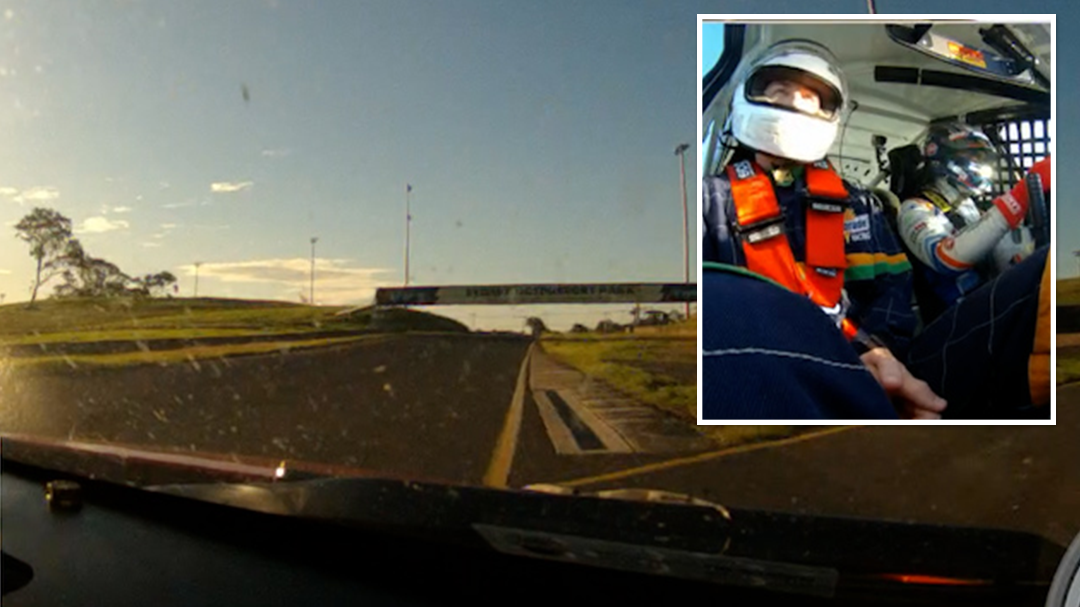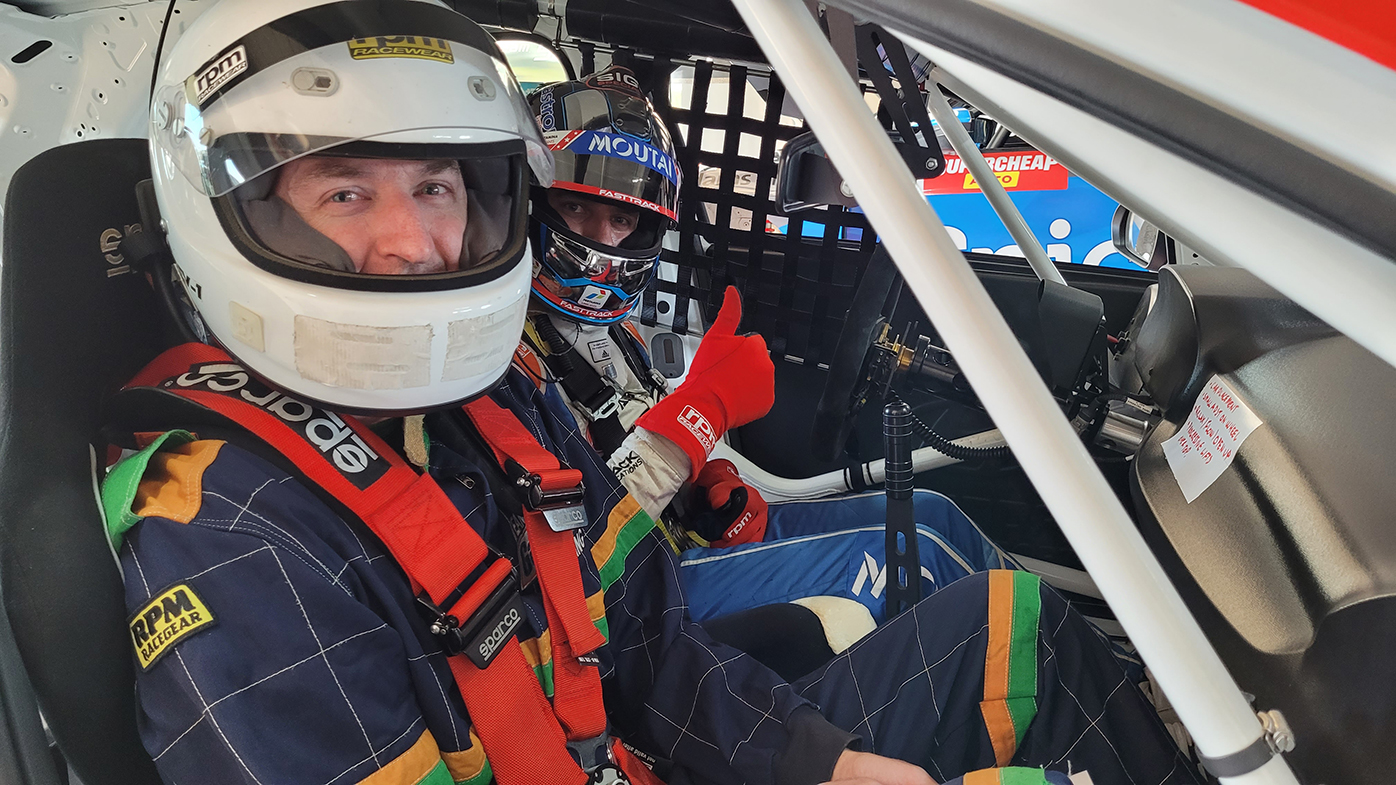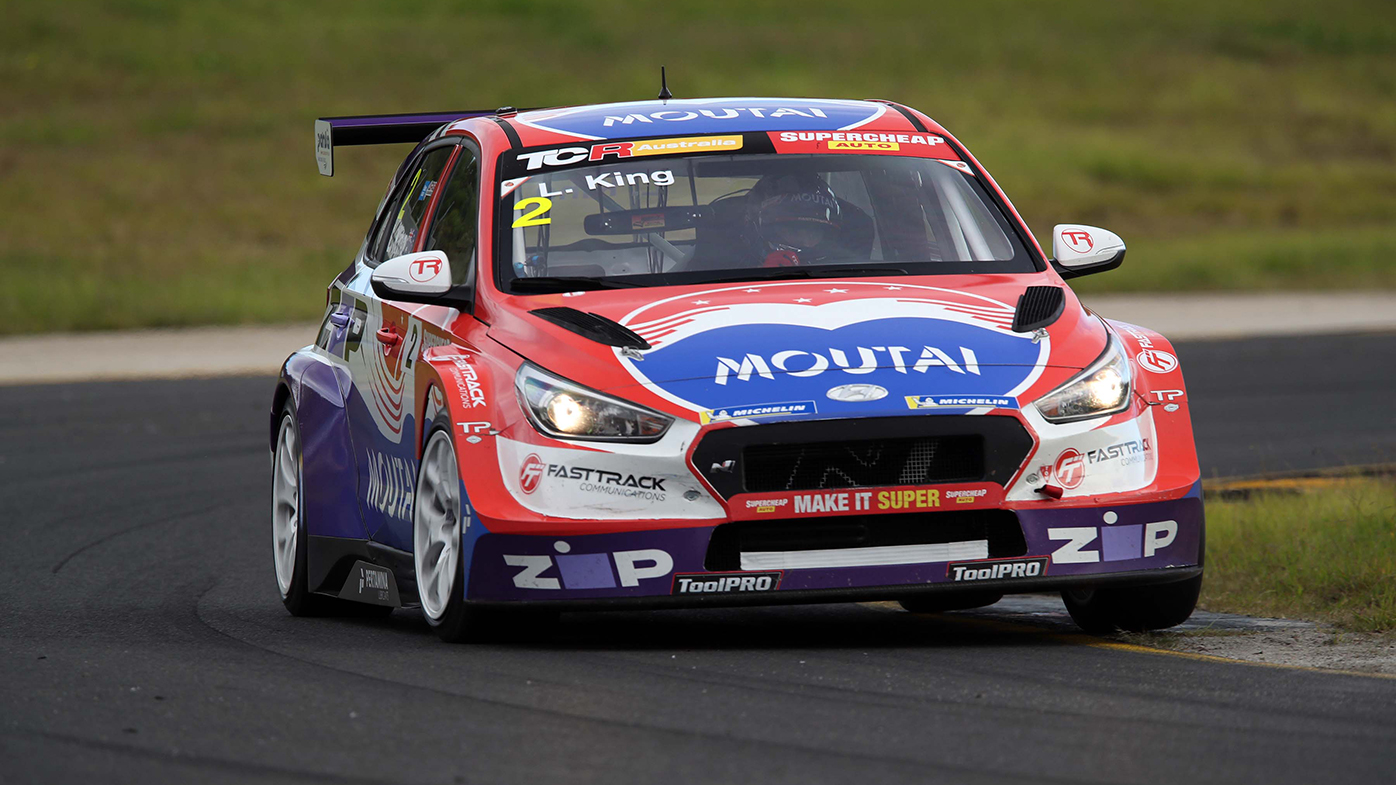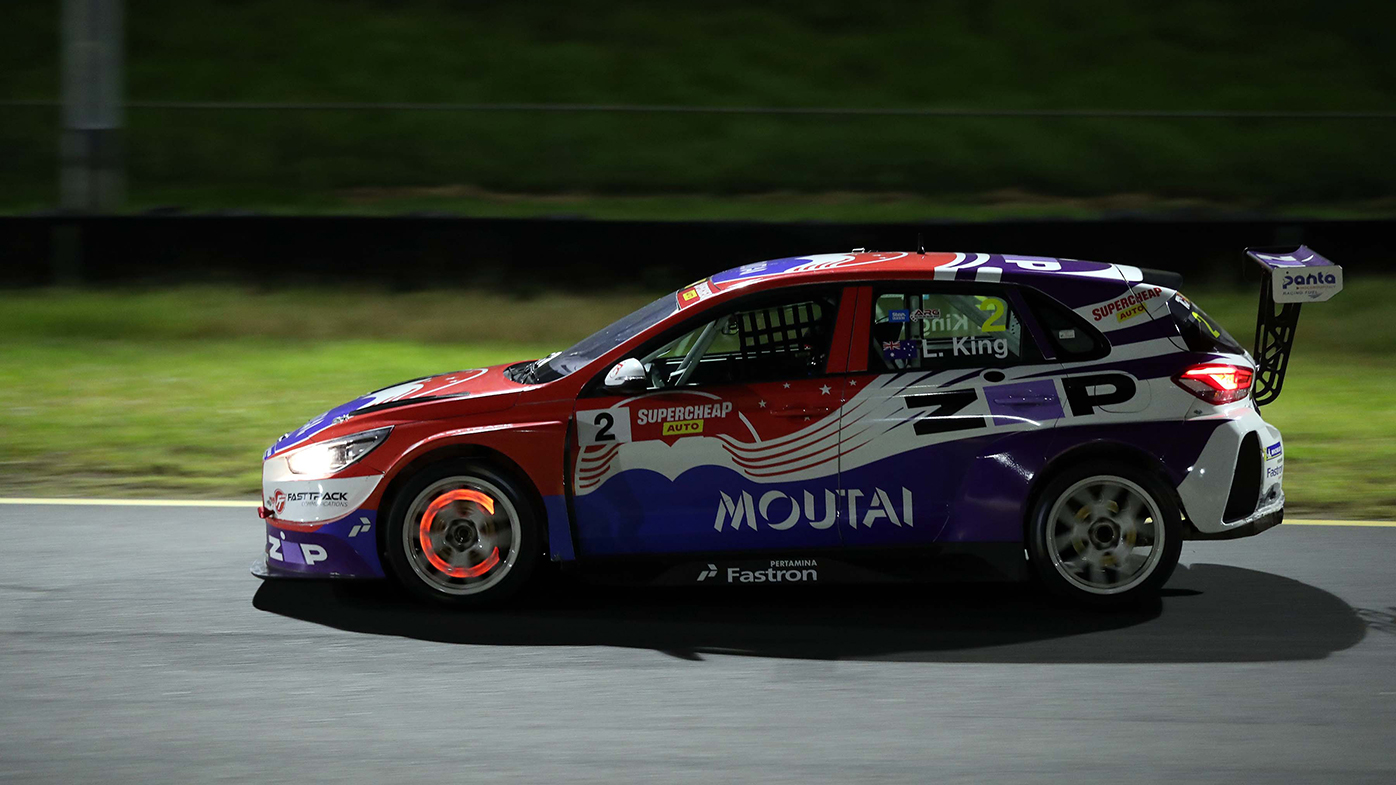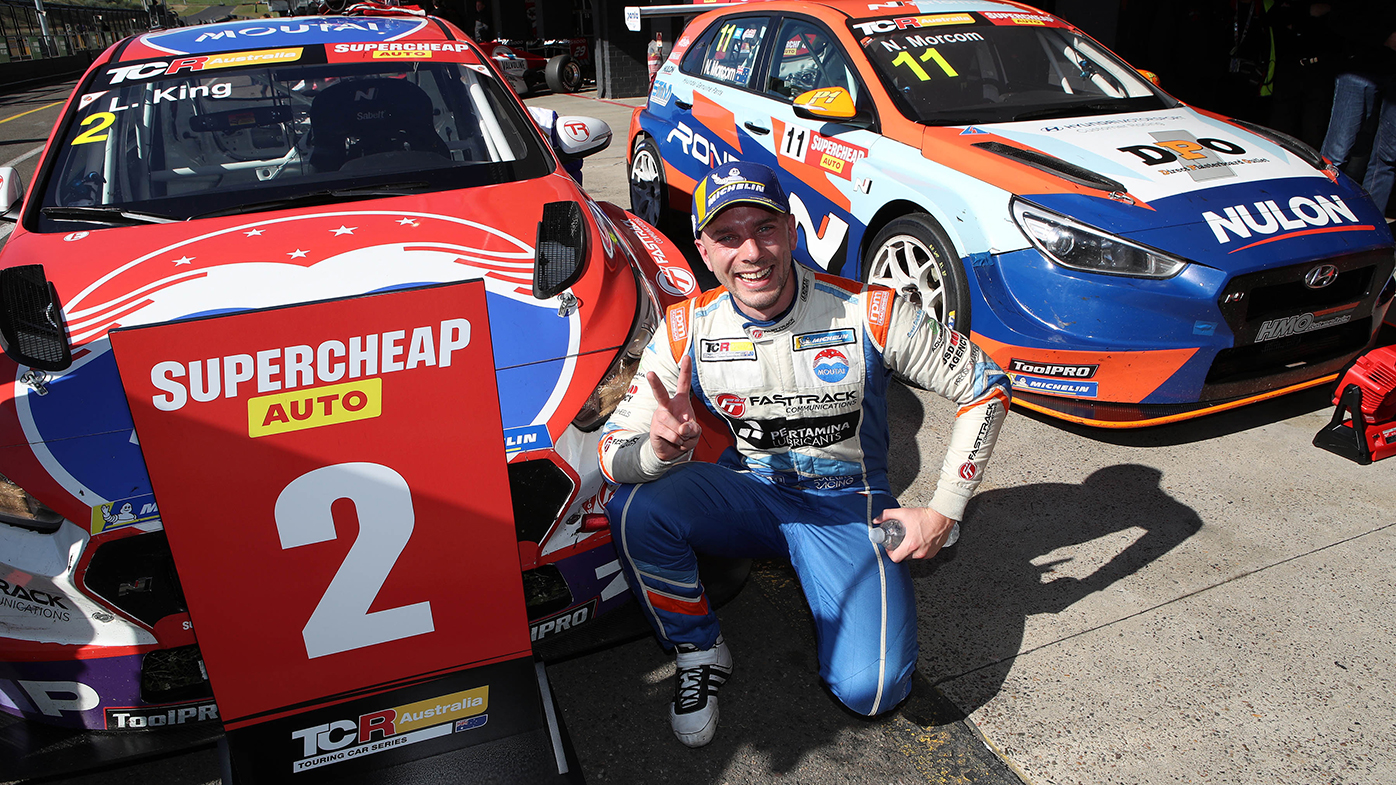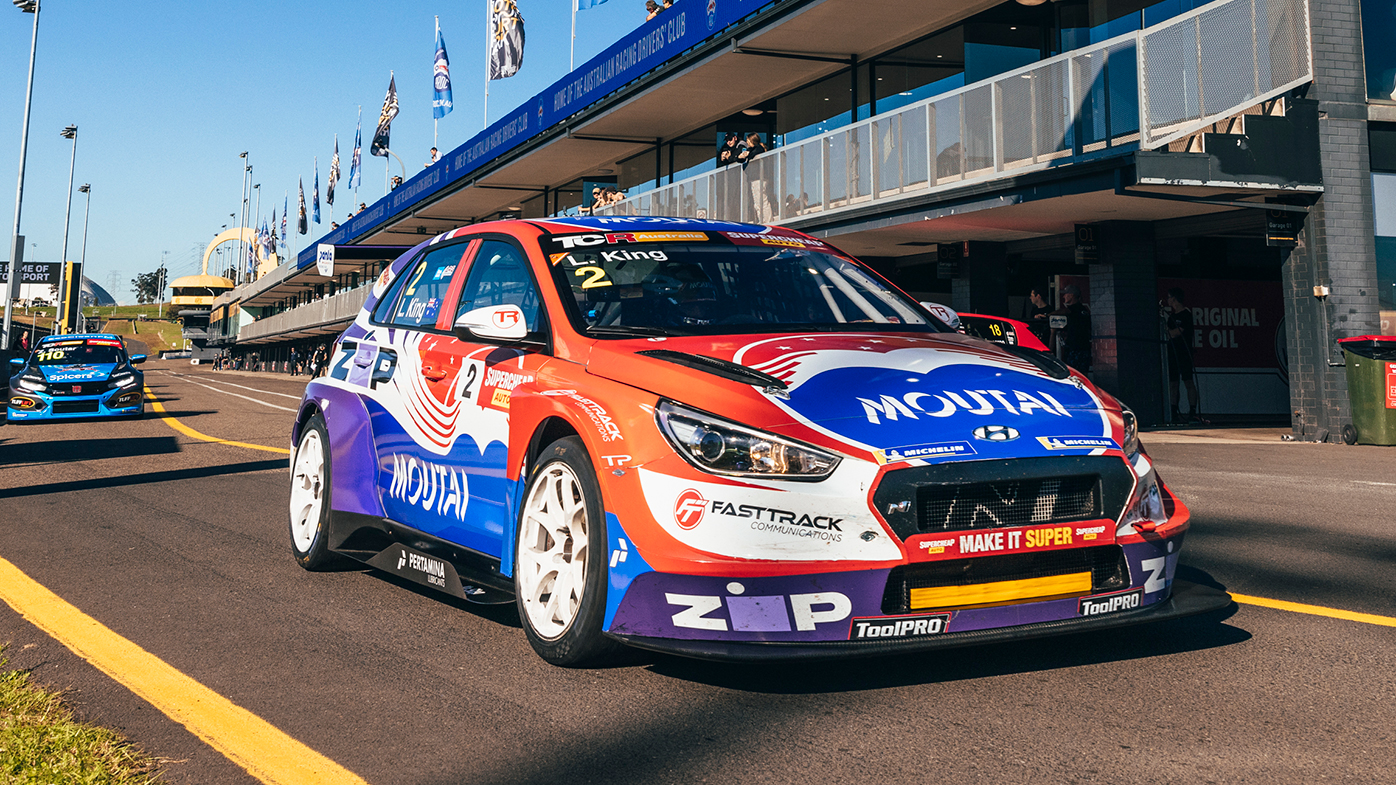The invitation was innocent enough. Jump in the passenger seat with TCR star Luke King for a hot lap around Sydney Motorsport Park.
“Find out just how fast he can go,” it said. Having lapped the 3.93 kilometre circuit in about 100 seconds, the answer to that is fast. Very fast.
That much would have been apparent from a quick glance at the 2021 TCR Australia championship standings. King finished fourth, hot on the heels of the champion, Chaz Mostert. Yes, that Chaz Mostert, the two-time Bathurst 1000 champion.
READ MORE HERE: ‘Unbelievable’ Aussies break world record
READ MORE: Beloved Melbourne Cup winner dead at 29
READ MORE: Late blunder duds QLD as Blues win a belter
It’s been 29 years since I last went for a hot lap around SMP, and things have changed somewhat since then. Firstly, I didn’t have to miss an important maths exam this time, something I may have neglected to tell my parents in 1993. Hey, I was (and still am) a motorsport tragic and there are certain priorities in life, high school exams not being top of that particular list.
Three decades ago nobody batted an eyelid at a schoolkid whose wardrobe consisted mainly of shirts and caps covered in the logos of the cigarette manufacturers who sponsored the sport back then. These days I imagine that would attract the attention of a number of government departments.
When I mentioned that I’d done this once before, and the driver was none other than 1980 Formula 1 world champion Alan Jones, King’s competitive instinct kicked in.
“That’s OK, I reckon I’ve got AJ covered,” he said with a smile.
As I put the race suit and helmet on, the third difference became apparent. The HANS device has only become mandatory in motorsport in the last 20 years, so that was something to get used to. HANS stands for head and neck support, and sits on my shoulders, with two straps that connect to the helmet, the idea being to prevent my head being thrown forward in the event that King hits something solid. Like the concrete walls that line the circuit.
STAN SPORT MOTORSPORT BLURB HERE
As I’m being strapped in, it’s clear why the HANS device is needed. Because if we come to a sudden stop, my body isn’t going anywhere. The five-point safety harness will see to that. But there’s nothing restraining my head, so without a HANS device, the chances of a neck injury would be significantly increased, something else I may have forgotten to tell my parents in 1993.
Somewhat disconcertingly, the Hyundai i30 is left hand drive. So I’m sitting on the right, which feels a little bit weird. Space and comfort are at a premium, there isn’t enough room to fully extend my legs, although at 185cm tall that’s something I’m used to. And as you can imagine, the car has been stripped of everything not considered essential. So there goes the radio and air conditioning. And with the roll cage taking up a fair amount of space, King and I are practically sitting shoulder to shoulder.
Being the first one out has one big drawback. The tyres are cold. No tyre-warmers here. That means on the out-lap from the pits King is working the brakes hard, even on the straights, throwing the car from side to side to generate some temperature.
As we exit the last turn to start the lap, the acceleration is immediately apparent. We come out of the turn at 90 km/h and I spend much of the time on the front straight glancing at the dash in front of King, which quickly shows 200 km/h, and tops out at 221 km/h.
For those who aren’t familiar with Sydney Motorsport Park, turn one is a long left hander. It doesn’t require braking either, because King lifts off the accelerator briefly, dropping to only 197 km/h for the turn, pulling 2.5G, meaning my 80kg bodyweight feels more like 200kg.
It’s straight back on the throttle for the short run down to turn two, a tight hairpin. But 125 metres short of the corner, we’re still doing 208 km/h. It’s why those that aren’t familiar with motorsport often find the braking more of a shock than the acceleration. Then it’s hard on the brakes and down to 75 km/h in about the time than it’s taken you to read this sentence, as my body is pressed forward against the harnesses.
The next corner looks innocuous enough, but again it’s very physical. King accelerates all the way through the right-hander, reaching 135 km/h and pulling 2.3G, clipping the inside kerb for good measure, which is a little rougher than anything you might experience in your road car.
A series of 90 degree right and left handers follow, with the Hyundai using every bit of track and sometimes more, a consequence of circuits having given up on trying to police track limits and instead paving the runoff areas. If you build it, they will use it.
A brief slide through turn six is proof the tyres still aren’t in the optimum temperature window, and it’s another hard stop for turn eight, the slowest on the circuit. We go from 160 km/h down to 70 km/h as King negotiates the right hander, again taking advantage of the runoff area to get back on the throttle as quickly as possible.
The last turn seems to go on forever, a double apex left hander that leads onto the main straight, it’s taken at around 110 km/h, but the forces remain above 2G for about eight seconds, making it physically one of the hardest parts of the circuit, especially when you don’t have a steering wheel to hang onto!
So that’s a lap of Sydney Motorsport Park. When we return to the pits, I discover how lucky it was that King didn’t put it in the fence, because getting out quickly might have been a challenge. Being careful not to step on the electronics on the floor in front of me, I also can’t step on the bodywork beside the door. It’s a rather ungainly exit that takes the best part of 10 seconds.
That lap was the prelude to a successful weekend at Sydney Motorsport Park for King. He finished 7th, 2nd and 4th in the three races that comprised the fourth round of the TCR Australia series.
Having missed the first two rounds, there’s no championship pressure on King this year, and he is proving to be more than nuisance value for those with their eyes on the top prize. Tony D’Alberto, who finished third in the Bathurst 1000 five years ago, leads the series, but any number of drivers are still in contention with three rounds remaining.
King is hoping this season can serve as the launchpad for something special, with the 32-year-old eyeing the World Touring Car Cup in the future. That series, which includes races in Spain, France and the legendary Nurburgring Nordschleife circuit in Germany, offers King the chance to take his talents to the world stage.
“I think we will probably get there at some stage, whether it be later this year or early next year,” he explained.
“We’ve got some good relationships with the teams over there, who I started speaking to as soon as I got into TCR, a few of those contacts have come through Jason Bright, who’s my mentor.
“Australian TCR is probably one of the most competitive TCR championships of the domestic championships around the world, and there’s more than 30 of them.
“Three of our four major sponsors are international brands, so that would work well for us.”
And if King does take on the world, we’ll get the definitive answer as to whether or not he really does have Alan Jones covered.
For a daily dose of the best of the breaking news and exclusive content from Wide World of Sports, subscribe to our newsletter by clicking here!
